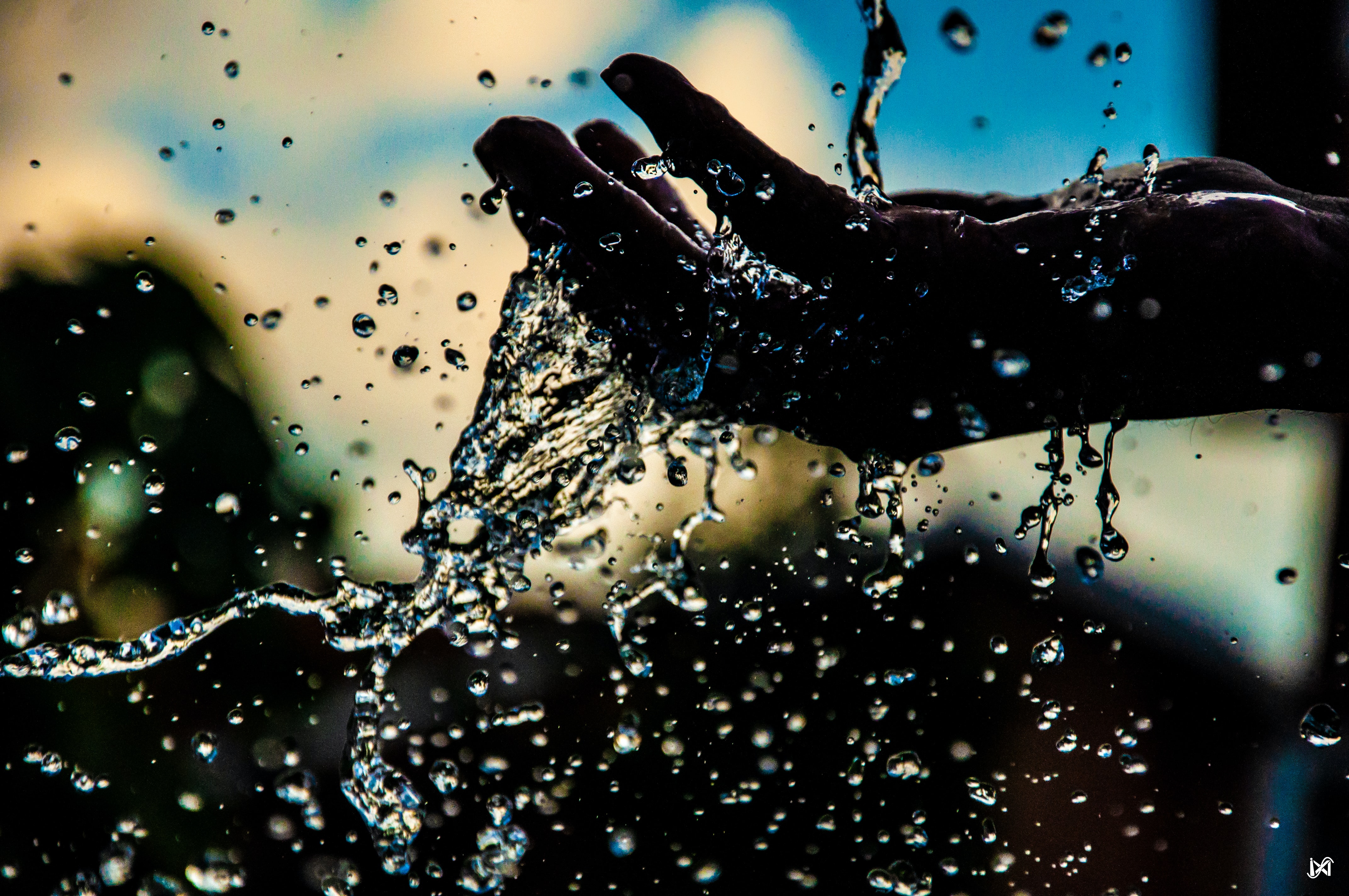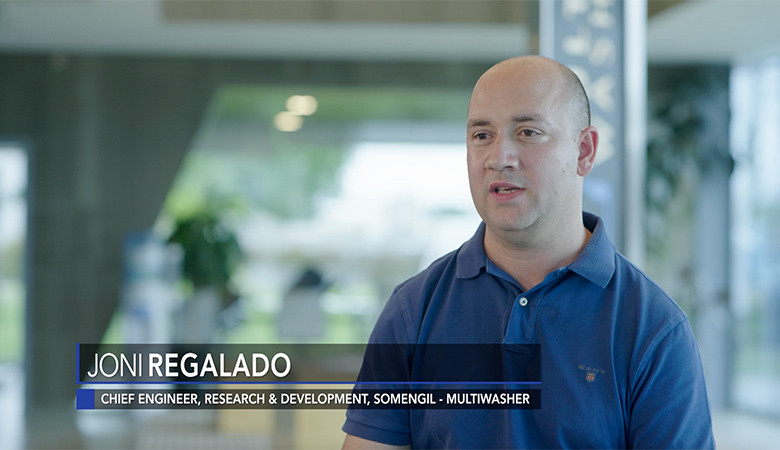Lavagem Industrial / Artigos
Circular economy: nothing is lost, everything is transformed
Circular economy is a new way of thinking about the future and the relationship with the planet. Find out what it means and how you can transition to this model.

 11 minutos de leitura
11 minutos de leitura
2022-10-20 15:40:13
Next time you visit a Burger King, notice the packaging: it is likely been reused. Adidas, on the other hand, has just presented the “shoes that you will never actually own”, made of a single material and without glue so they can be easily repurposed when the customer eventually returns them. Brands such as IKEA or Apple recently presented their buy-back scheme, asking consumers to resell their products back to them. And Samsung produces its new state-of-the-art smartphone from discarded fishing nets recovered in the oceans.
These are just some practical examples of circular economy and show how brands can tackle overconsumption of the planet’s resources. Find out what this concept means, what its benefits are, and how to implement it in yout business.
Circular Economy: what is it?
Circular Economy is a model of production and consumption that aims to extend the lifecycle of materials. The goal is to improve waste management so that products can be reused, repaired, renovated or recycled. This way, companies keep products in the economy (hence the name circular economy) as long as they can serve a purpose – thus avoiding new production.
The Circular Economy model contrasts with the traditional Linear Economy model, since the latter is based on the principle of single use: production/consumption/waste. This requires an availability of resources that the planet simply does not have, both in terms of raw materials and of the energy to process them.
The goal of Circular Economy is simple in its essence: minimize waste by extending product lifespan. Its logic is irrefutable: if products last longer, there is less need to produce new ones, hence less consumption of resources. Naturally, this mission requires a design shift towards reuse, meaning that items need to be envisioned with reutilization in mind, right from the first stages of development.
It is important to note that the adoption of the Circular Economy does not mean a world of restrictions, minimisation and loss of efficiency–on the contrary, products and factories are reused, refitted and repurposed, allowing companies to bolster productivity.
What is the importance of the Circular Economy?
The figures are disturbing: every year, 2.5 billion tonnes of garbage are produced in the European Union – over 300 times the weight of the Giza pyramid in Egypt or nearly 8,000 times the mass of the Empire State Building. The planet simply can not regenerate at this rate. This is where Circular Economy comes in, to dissociate human well-being from the consumption of (fewer) available resources.
Adopting the Circular Economy model offers several environmental and economic benefits for any industry.
1. Reduced consumption of non-renewable resources
Adopting a Circular Economy model is the first step towards reducing consumption of non-renewable resources. Today, most industries still consume resources as if the supply of oil, natural gas or coal was inexhaustible. Thus, extending the lifespan of materials is a smarter way of using resources, with zero waste.
2. Decreased carbon emissions
The production and disposal of materials make up a significant share of greenhouse gas emissions. Circular Economy enables companies to manage resources more efficiently and is one pillar of the transition process to a decarbonized model of production.
3. Minimized waste
This is the ultimate goal of any Circular Economy strategy: reuse resources over the longest possible period of time, reaching zero waste. For example, the production of a single smartphone requires some 13,000 liters of water. A computer? 37, 000 liters. In an average car, almost 15% of its mass is plastic with a tendency to increase. The circular economy means less plastic in the ocean, fewer landfills and less need to use finite resources, enabling businesses to achieve their goals without harming the environment.
4. Improved consumer loyalty
The Circular Economy paves the way for greater product durability – something every customer treasures. In addition, brands that comply with environmental standards enjoy better market reputation, especially among younger generations. After all, most consumers are willing to pay more for products from sustainable brands. In fact, customers might leave because of poor environmental practices and prefer other brands more compatible with their own sustainability values.
5. Increased resilience
When companies transition to the Circular Economy model, they use fewer new materials and more recycled products. This means better protection against price volatility and interruptions in the supply chain. These phenomena have been increasing in frequency and duration either by political reasons, social conflicts or by the disruptive effect of climate change.
Circular Economy: 3 good examples
Companies play a huge role in achieving rapid results for the environment – its resources, global presence and influence must be capitalized so that our planet can survive. These 3 great brands have taken important steps in this direction.
1. IKEA
The Swedish multinational is one of the big brands leading the way to Circular Economy reaching critical mass. In 2018, IKEA began implementing its People and Planet Positive strategy, with the goal of manufacturing all of its products and packaging from renewable or recyclable materials by 2030.
Currently, the brand already has a very significant environmental performance: IKEA produces over 60% of its product line from renewable materials and almost 10% contain recycled materials.
2. Adidas
Adidas has made remarkable efforts to ensure the transition to a circular economy model. First, they started marketing sneakers made of recycled plastic salvaged from the ocean, which garnered worldwide media attention. Since then, several million of units have been sold.
In addition, they teamed up with Parley for the Oceans to collect plastic from the beaches. Adidas uses them as raw materials and has committed to using only recycled polyester in all their products and applications by 2024.
3. H&M
H&M is taking steps to position itself as a sustainable player in the fashion industry. Since 2018, the brand has been introducing recycled or sustainable materials into its production, with an ambitious goal of reaching 100% by 2030.
The Take Care initiative, implemented in Germany, played a fundamental didactic role with the public in terms of the care to be taken with clothing, to extend its life cycle. Thus, pieces that would otherwise be discarded can have a second life, either through a simple repair, or in the effective elimination of stains, replacement of buttons or recycling of used jeans. The success of this initiative has led to its expansion to other countries, such as France, the United Kingdom, Sweden and Norway.
How to move towards Circular Economy in your company
Transitioning to the Circular Economy model means applying new principles of design, manufacturing, marketing, and management. It may seem like a challenging task, but every company can take steps towards a successful transition.
1. Make a realistic yet bold plan
The transition to the Circular Economy model requires planning. Key team members should come together to define the goals and the path to achieve them. The focus should be on how to do better instead of just not doing harm to the environment. Determine the factors (internal or external) that may be at the root of unsustainable situations and plan an alternative roadmap – realistic but bold.
2. Involve everyone in your organization
The transition to the Circular Economy model is only possible if all actors involved are committed to a shared purpose. Training sessions ensure everyone knows of its importance and how they can help. Simply by asking team members to take part with practical suggestions can generate crucial ideas on how to reduce resource consumption and increase products lifecycle. The circular economy is an open source concept, where everyone’s contribution is an integral part.
3. Innovate and optimize
This is when vision becomes reality. Recycle materials where possible, recover what you can for manufacturing other products and reduce waste to a minimum. Evaluate how products can be designed to extend their life cycle – as raw material for others or even in the hands of third partners.
For example, washing processes have a high potential for savings, as innovative equipment can optimize the required amount of resources (such as water, detergent and energy). This is the case of MultiWasher, a machine developed by Somengil.
4. Celebrate and inspire
Adopting the Circular Economy model is not a solitary endeavor. On the contrary, it should be shared with partners, suppliers and customers. Not only does it serve a self-motivating purpose, it can also inspire others to new ambitions and actions. Focus on celebrating the possibilities, not the obstacles, and make the most of everyone’s help and collaboration to achieve your sustainability goals.
Somengil, caring for the planet is everyone’s goal
Improving the industrial washing processes is a fast path to achieving sustainable goals, with measurable savings and significant environmental benefits. The MultiWasher uses 2/3 less water than other industrial washing solutions, with 70% less detergent needed for a perfect wash. It is environmentally friendly, while ensuring the perfect hygiene of utensils. So if you want to take sustainable action in your company, let yourself be impressed by MultiWasher’s performance. Schedule a free webinar and see the difference.
Também pode gostar

Lavagem Industrial / ArtigosArtigos
A matter of chemistry: how to improve quality control through washing
Quality control is an essential activity for businesses, with a direct impact on results. Efficient washing plays a key role in achieving world c...
Postado em 2021-10-14

Lavagem Industrial / ArtigosArtigos
MultiWasher featured in Bloomberg
Bloomberg has highlighted MultiWasher and Somengil as benchmarks in sustainability and efficiency. Find out why.
Postado em 2024-01-02

Lavagem Industrial / ArtigosArtigos
9 essential tips to reduce operating costs
Discover how to reduce operating costs and increase productivity with these 9 essential saving tips.
Postado em 2023-01-26






















 Português
Português English (UK)
English (UK) English (USA)
English (USA) Français
Français Español
Español Deutsch
Deutsch